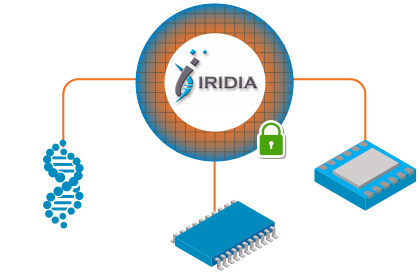Iridia Raises $6 Million and Now Total at $40 Million
Developing DNA-based memory chips
This is a Press Release edited by StorageNewsletter.com on December 16, 2021 at 2:03 pmIridia, Inc. has closed a follow-on round of $6 million with Prime Movers Lab.
Amy Kruse, general partner, Prime Movers Lab, will be joining Iridia’s board of directors immediately.
This round is preceded by an oversubscribed $24 million financing, which will facilitate the company’s ability to double its headcount and physical footprint. Proceeds from this follow-on round will fund further validation of the company’s technology and the development of working prototypes.
Iridia’s technology is designed to integrate the writing, storage, and read back of massive amounts of data using synthetic DNA as the storage media. This combination of functionality will increase data density and durability compared to conventional approaches, while dramatically reducing the physical and carbon footprints of commercial data centers around the world.

“We are excited to have Prime Movers Lab on board as an equity partner, as well as the addition of Amy to our board,” said Murali K. Prahalad, Ph.D., president and CEO. “They bring a tremendous amount of strategic expertise in deploying complex technologies into real-world environments, as well as the potential for participating in additional financing rounds.”
Kruse brings over 15 years of experience working with emerging companies. She is currently a general partner at Prime Movers Lab where she leads their life sciences investments. Previously, she served as the chief scientific officer at Optios, as well as VP and CTO at Cubic Global Defense overseeing innovation and the R&D portfolio across the entire defense enterprise. Early in her career, she served as a government civilian program manager at DARPA. She is a founding member of the Loomis Innovation Council and a Guest Lecturer for Singularity University. She earned a BS in Cell and Structural Biology and a Ph.D. in Neuroscience from University of Illinois Champaign-Urbana, where she was awarded an NSF Graduate Fellowship.
“As the volume of data being generated every day increases at exponential rates, the demand for storing that data is also skyrocketing. We think DNA provides the most exciting opportunity for solving the storage problem, and Iridia has the right team and approach for the vast and underserved storage space,” she said. “Iridia’s proprietary biochemistry and system architecture will be more energy-efficient, cost-competitive, and secure than competing storage solutions.“
Data gen is expanding exponentially. The Economist predicts there will be up to 1 trillion computerized, networked devices by 2035. The world’s ability to generate digital data is far exceeding our ability to store it, thus constraining the power of big data analytics. Currently, over 20ZB of digital data are lost each year due to storage capacity limitations. To put this in context, to store 1ZB would require more than one billion, one terabyte HDDs. And if technologies such as flash memory were used to meet this growing need, the resultant archive would need up to 100x the world’s available supply of microchip-grade silicon by 2040 (1).
Iridia’s patented method of storage integrates semiconductor technology with an enzyme-based chemistry to add DNA-based bits representing “0s” and “1s” in a programmable fashion. This offers the potential to add orders of magnitude more storage capacity compared to current archival technologies such as magnetic tape and HDDs paving the way for commercially viable DNA storage solutions.
“As the industry focus on DNA storage expands, Iridia will be well positioned with a solution designed specifically for the modern data center,” said Jay T. Flatley, COB of Iridia and chairman and former CEO of Illumina. “This additional funding will enable the company to accelerate development of working prototypes, an important milestone on the path to commercialization and adoption.”
(1) Zhirnov, V., et al., Nucleic acid memory, Nature Materials., vol. 15, no.4,pp 366-370, 2016













 Subscribe to our free daily newsletter
Subscribe to our free daily newsletter

